Introduction

In an era where originality shapes the world around us, innovative design solutions are transforming how industries operate, influencing everything from technology to urban development. The quest for fresh ideas and creative problem-solving has never been more critical, as companies seek to stand out in an increasingly competitive marketplace. This evolution isn’t merely about aesthetic appeal; it involves strategic thinking that fosters growth and adaptation in ever-changing environments.
One of the key drivers behind this shift is the demand for sustainability. Design innovation is not limited to visual appeal but extends to functionality and resource efficiency. For instance, the architectural firm BIG (Bjarke Ingels Group) exemplifies this by incorporating sustainable technologies in urban planning projects, redefining what modern cities can accomplish BIG’s projects. By adopting such forward-thinking approaches, businesses can reduce their carbon footprint while enhancing user experience and operational efficiency.
Moreover, the integration of technology into design innovation is a game-changer. Consider the way augmented reality (AR) is revolutionizing user interfaces in retail and interactive platforms. Companies like IKEA have utilized AR through their IKEA Place app, enabling customers to visualize furniture in their homes before making a purchase IKEA Place app. This not only enhances customer satisfaction but also streamlines the purchasing process, illustrating how innovative design solutions foster stronger consumer connections.
Collaboration across disciplines further enhances design innovation. By blending insights from various fields, teams can carve out new pathways and solutions that were previously unimaginable. For example, the collaboration between engineers, artists, and environmentalists has led to the creation of eco-friendly packaging solutions that serve both consumer needs and environmental goals. Such interdisciplinary ventures highlight the potential of innovative design solutions to address complex challenges through diverse perspectives.
In summary, the transformative power of innovative design solutions lies in their ability to blend creativity with practicality. Whether through sustainable architecture, cutting-edge technology, or collaborative efforts, these solutions pave the way for a future where design not only meets aesthetic and functional demands but also aligns with societal and environmental values. As the landscape of design continues to evolve, embracing innovation becomes essential for anyone looking to make a meaningful impact in their field.
Section 2: Innovative Applications and Real-World Case Studies
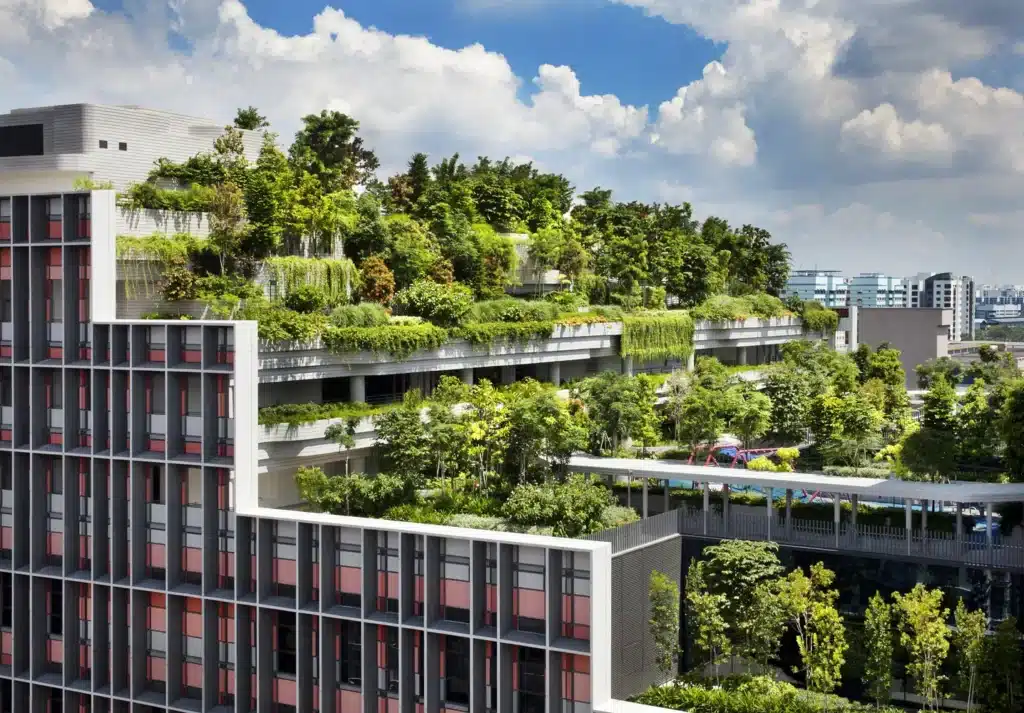
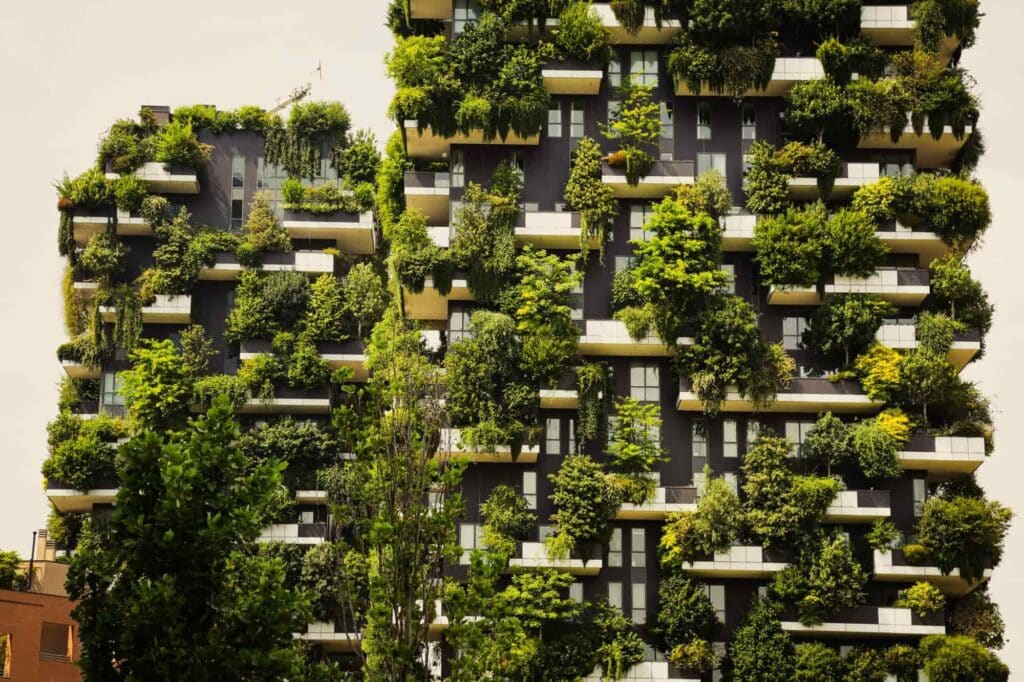
Building on the foundation of design that harmonizes aesthetics, function, and ethical responsibility, this section explores tangible examples where creative thinking delivers transformative results. These case studies demonstrate how innovation enters architecture—not merely as a buzzword—but as a catalyst for sustainability, social well-being, and resilience.
Net-Zero and Energy-Positive Buildings
Consider the SoLo House in British Columbia, designed by Perkins & Will: a prefabricated, modular retreat that not only functions completely off-the-grid but actually generates more energy than it consumes, earning its Passive House Institute Low Energy Building Certification. Innovative building envelope strategies and healthy materials make it a prototype of modern, eco-conscious housing SoLo House.
Another inspiring structure is the Kendeda Building for Innovative Sustainable Design at Georgia Tech, inaugurated in 2019 and achieving Living Building Challenge certification in 2021. Equipped with rooftop solar arrays, rainwater harvesting systems, and a rooftop apiary, this multipurpose academic building serves as one of the few Living Building-certified structures in the Southeast U.S. Kendeda Building.
Vertical Greenery and Urban Regeneration
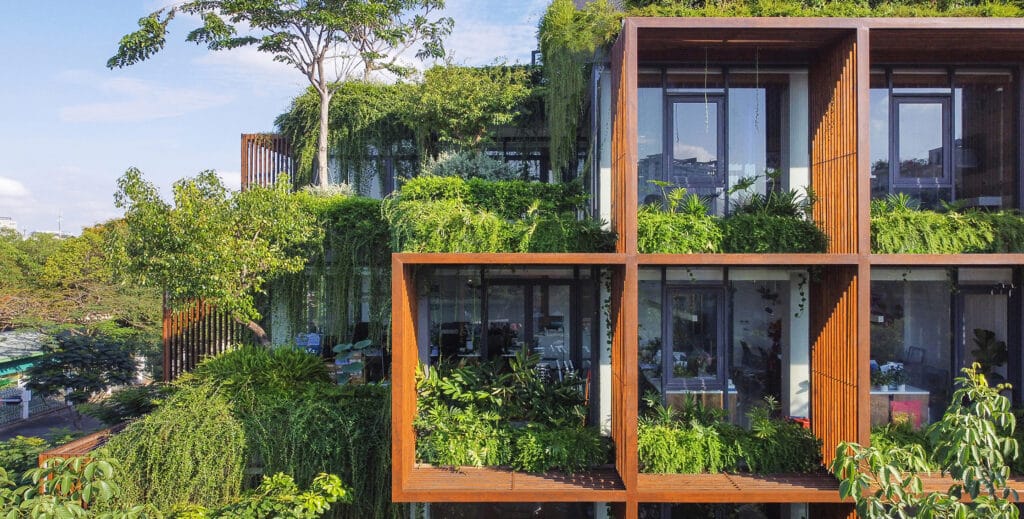

Urban environments are being reimagined through vertical gardens and living facades. Milan’s Bosco Verticale merges residential towers with more than 20,000 plants and trees, creating a micro-ecosystem that improves air quality, reduces energy use, and enhances biodiversity Bullitt Center & Bosco Verticale.
In Sydney, the One Central Park project combines residential architecture with lush vertical landscaping and energy-saving technologies like heliostat mirrors to bring sunlight deep into shaded zones, elevating both visual appeal and environmental performance One Central Park.
Contextual and Regenerative Architecture
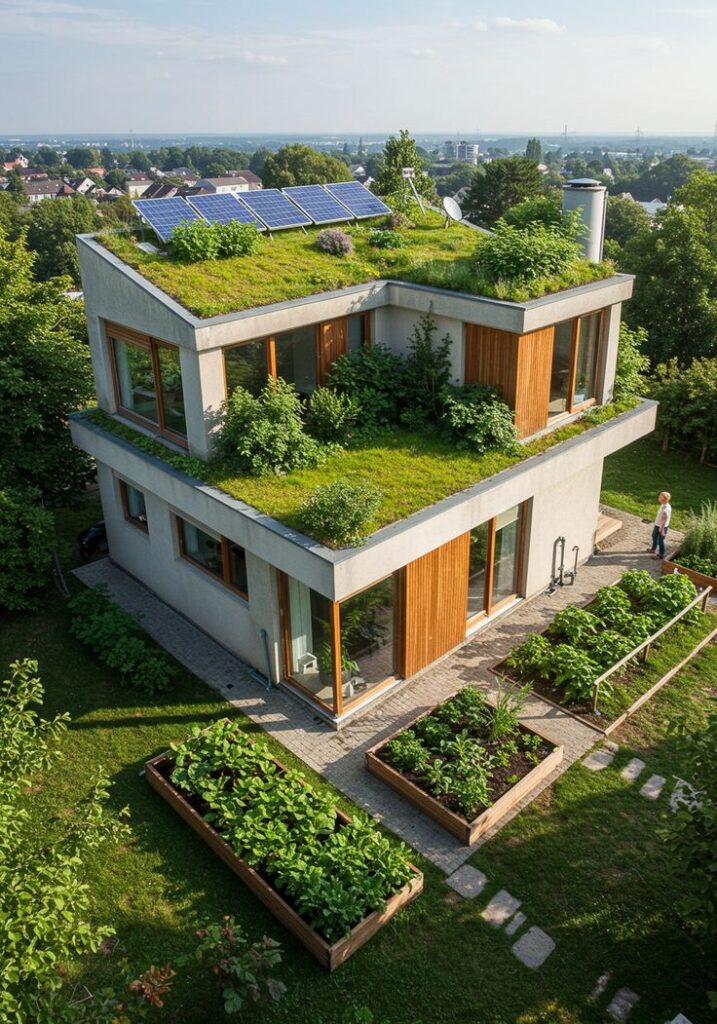
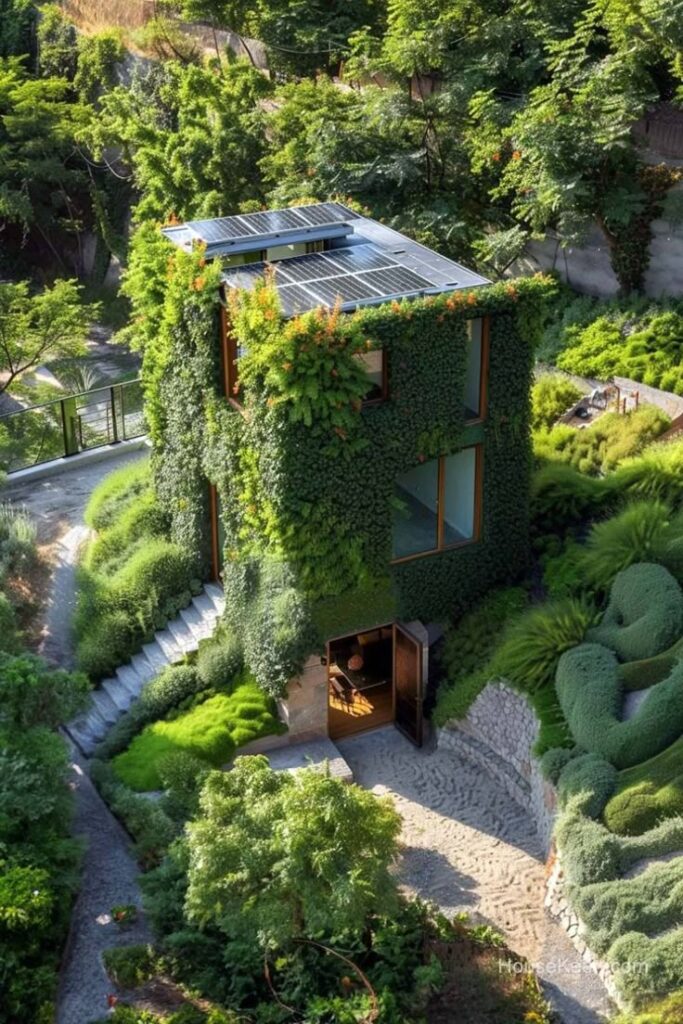
Projects like the experimental Housestead in rural England push design beyond function and beauty, functioning instead as a living laboratory. Composed of four separate wings arranged around courtyards, it embodies regenerative design principles, using thatched roofs and greenhouse-inspired spaces to nurture autonomy, family life, and environmental integration Housestead.
Likewise, the Modular Photobioreactor façade concept responds to climate challenges with technological ingenuity. These “neutralization bricks” embed algae within modular façade components, enabling users to assemble and monitor microalgae-based GHG mitigation systems—creating dynamic, responsive exteriors with environmental function embedded into form
Modular Photobioreactor Façade Systems.
Together, these real-world examples—whether net-zero homes, leafy urban towers, or bioreactive facades—demonstrate how thoughtful, context-aware design can deliver both aesthetic richness and measurable environmental benefits. As professionals look to elevate their craft, integrating such models fosters innovation that extends beyond theory into transformative action.
A team of engineers collaborating around a table filled with blueprints and digital tablets in a modern office space.
Section 3: Embedding Innovation Through Technology and Strategy

Picking up where our discussion of collaborative environments left off, this section explores how technology-driven methodologies and strategic design approaches amplify innovation in meaningful, measurable ways. We’ll delve into digital prototyping, AI integration, and structured frameworks that embed design innovation deeply into product development.
Digital Prototyping: Accelerating the Path to Market
Many manufacturers have dramatically reduced prototyping time by adopting advanced digital tools. Research from the Aberdeen Group reveals that teams using digital prototyping build half the number of physical prototypes, reach markets up to 58 days faster, and cut prototyping costs by 48% en.wikipedia.org. Such efficiencies not only speed up delivery but free resources for creative experimentation—a vital ingredient of innovative design solutions.
AI-Powered Design: Enhancing Creativity and Efficiency
Artificial intelligence is reshaping the creative workflow. A recent study shows that AI tools have boosted productivity in creative agencies by 35%, while prototyping speed has improved for 82% of companies leveraging these systems wifitalents.com. The integration of AI helps designers focus on high-value tasks, such as refining concepts, rather than repetitive processes. These AI-augmented practices underline how ingenuity and technology can combine to elevate design outcomes.
Strategic Frameworks: From Mindset to Methods

To systematize innovation, organizations increasingly use structured approaches like the Advanced Innovation Design Approach (AIDA). Developed in Germany, AIDA formalizes front-end innovation through tools like TRIZ and computer-aided innovation, fostering an innovation-friendly culture across organizations en.wikipedia.org. By embedding such methodologies, teams can move beyond ad hoc creativity and toward repeatable, scalable processes.
Evidence of Impact: Design-Centric Businesses Outperform
Evidence shows companies that lead with design see stronger financial performance. A McKinsey study of 300 firms found those with top design scores achieved 32% faster revenue growth and 56% higher total returns to shareholders compared to their peers designrush.com. This reinforces the strategic value of elevating design from a supporting role to a core business lever.
Actionable Insights for Design Leaders
- Incorporate digital prototyping tools early in the process to iterate rapidly, reduce costs, and allow for more creative iterations.
- Explore AI solutions that automate routine tasks or generate initial concept variations, freeing designers to focus on strategic thinking.
- Adopt structured innovation frameworks such as AIDA to institutionalize creative problem-solving and promote cross-functional design thinking.
- Monitor impact using key performance indicators like time-to-market, cost savings, customer satisfaction, and financial returns to validate and refine processes.
By weaving together digital tools, AI, and strategic frameworks, companies can transform design from a department into a dynamic engine of innovation. The real-world data and case studies underscore how intentional, technology-enabled design practices can deliver both creative and commercial success.
The Impact of Innovative Design Solutions on User Experience
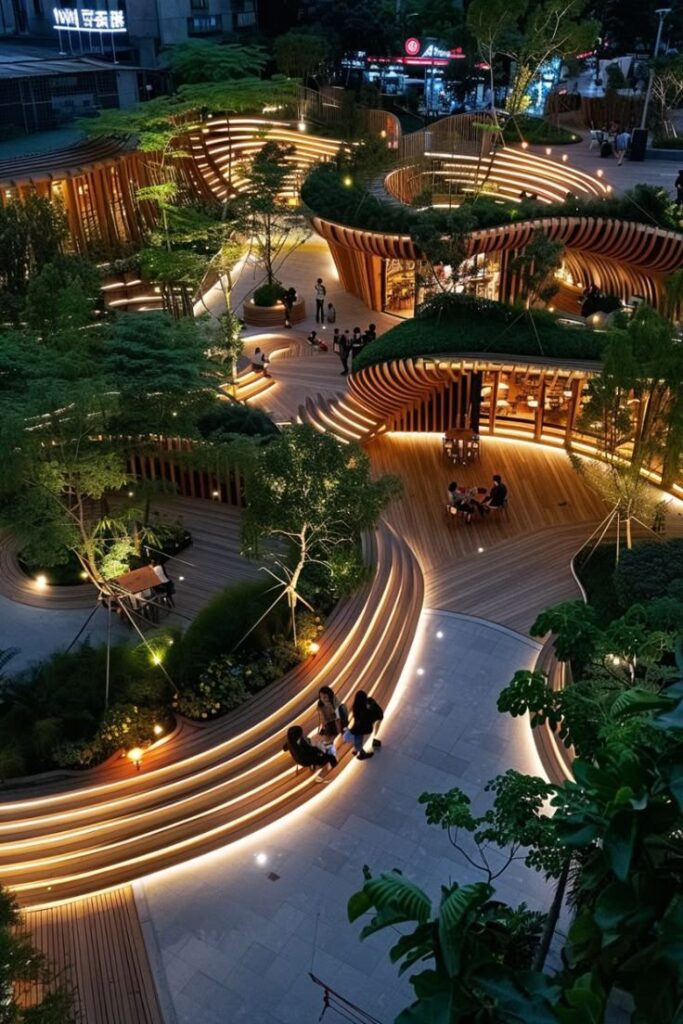
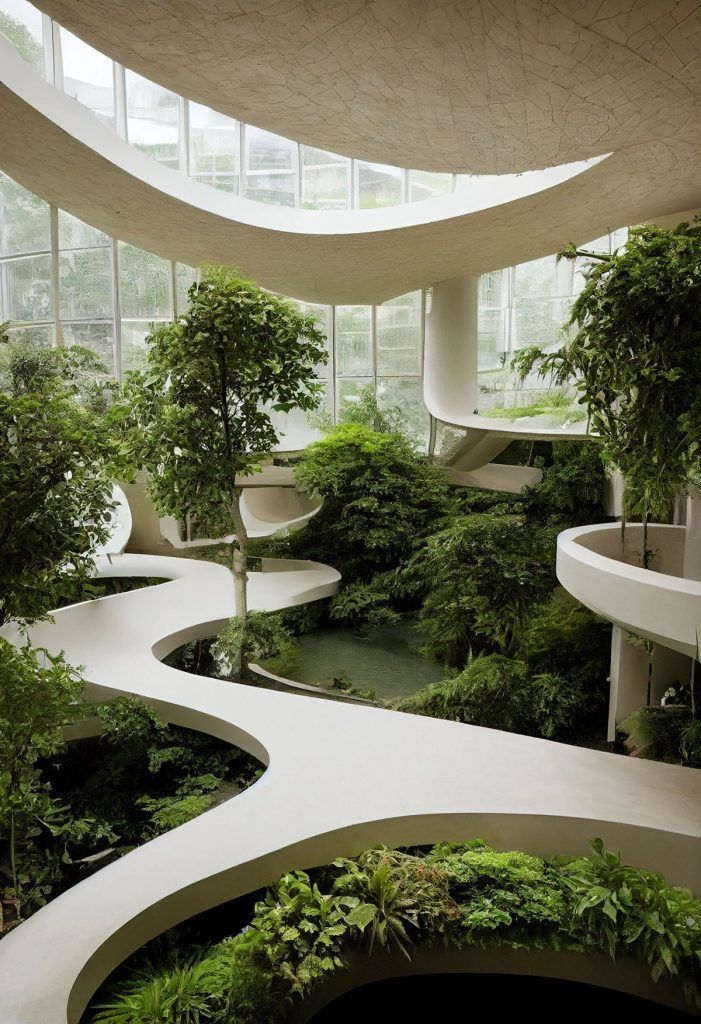
In today’s competitive market, adopting innovative design solutions is crucial for enhancing user experience. Effective design focuses on meeting user needs and creating seamless interactions. A strong example of this is Airbnb’s user-centric approach, where immersive design strategies have significantly improved customer engagement. By employing data-driven insights, Airbnb reimagined its app interface, resulting in a 30% increase in user retention according to Forbes. This case illustrates the profound impact of tailoring design to user behaviors and preferences.
Key Elements of User-Centric Design
- Empathy Mapping: Understanding user emotions and motivations allows designers to create more relatable products. For instance, IDEO uses empathy maps to craft solutions from the user’s perspective, ensuring designs resonate on a personal level.
- Prototyping and Testing: Iterative prototyping helps refine design solutions before full-scale deployment. Companies like Apple utilize rapid prototyping to test new ideas and gather feedback, which is crucial for innovation.
Such strategies not only produce satisfying user experiences but also distinguish products in a crowded market. For example, Slack’s intuitive interface stemmed from extensive user testing, ultimately reducing customer support queries by 30% according to IEEE Spectrum.
Leveraging Technology for Innovative Design
The integration of technology is central to modern innovative design solutions. AI-driven tools, like Adobe’s Sensei, enable designers to automate repetitive tasks, allowing more focus on creative problem-solving. Sensei analyzes vast amounts of design data to offer predictive insights, streamlining the process and boosting productivity. According to Adobe, this has led to a 3x increase in design efficiency for businesses utilizing these tools.
Furthermore, augmented reality (AR) is transforming user experiences by blending digital elements with the physical world. IKEA’s AR app allows customers to visualize furniture in their homes before making a purchase, enhancing decision-making and reducing return rates. This technology-driven design not only meets user needs but also fosters a more personalized shopping experience.
To conclude, integrating advanced technologies with a keen understanding of user-centric design principles creates powerful, innovative design solutions. These strategies do not merely enhance user experiences; they also drive business success by fostering loyalty and distinguishing brands in a dynamic market landscape.
A person working on a laptop at a desk covered with design sketches and a 3D prototype model.
Section 5: Conclusion – From Insight to Impact
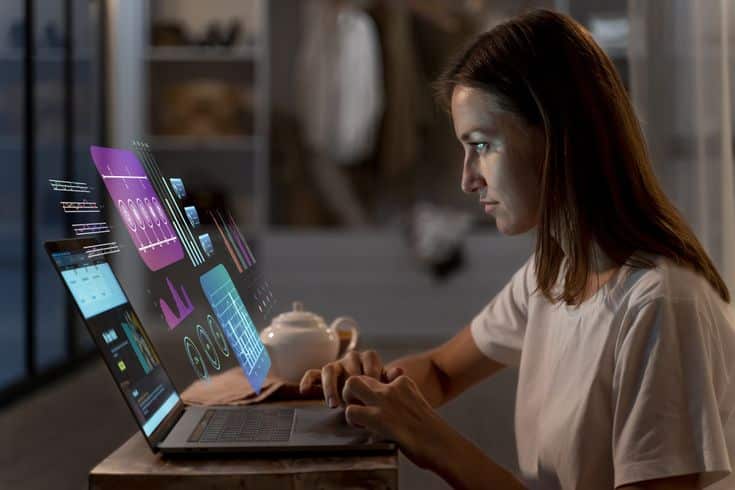
Drawing all threads together, the journey through innovative design solutions culminates in tangible value. We’ve seen how frameworks like the Advanced Innovation Design Approach (AIDA) bring together inventive problem-solving tools such as TRIZ and rapid idea generation apps to fortify the innovation process in industrial settings en.wikipedia.org. Meanwhile, digital prototyping tools enable teams to iterate and validate functionality before manufacturing—allowing companies to bring products to market faster, reduce cost by up to 48%, and prototype with half the usual number of physical builds en.wikipedia.org. These examples underline how combining structured methodologies with cutting-edge technologies transforms good ideas into real-world innovations.
Key Takeaways
- AIDA embodies a strategic blend of mindset, methods, and tools that accelerates innovation consistently across teams.
- Digital prototyping, supported by data from sources like Aberdeen Group, proves that early testing cuts both time-to-market and resource expenditure significantly en.wikipedia.org.
- User empathy, brought to life through design thinking, remains foundational—its proven success in projects like GE Healthcare’s MRI transformation underscores how emotional resonance drives adoption msicertified.com.
Actionable Insights for Your Next Project
First, evaluate whether your team could benefit from integrating proven structures like AIDA to reinforce innovation rigor. Second, adopt digital prototyping tools—not just for visualization, but as means to quickly test, refine, and iterate ideas without costly physical prototypes. Finally, never sideline empathy: even mature teams tackling complex challenges can reinvigorate outcomes by immersing in the user’s world and testing low-fi prototypes early, just as successful design thinking cases illustrate
msicertified.com.
Take the Leap: Your Next Move
The path from concept to creation doesn’t require moonshot resources—just deliberate application of smart tools, insights from real-world studies, and a commitment to understanding users. Whether you’re leading product innovation in a startup or reinvigorating design culture in an established company, now is the moment to embed these strategies. Start by mapping your current process, identify gaps where structured methods or digital validation could plug in, and pilot one small project with these approaches. You’ll not only enhance outcomes—you’ll also cultivate a mindset of continuous innovation. Ready to turn understanding into breakthroughs? The future of design depends on what you do next.
- 1share
- Facebook0
- Pinterest1
- Twitter0


